Introduction
Heroin addiction can be debilitating, and the withdrawal process is often a significant barrier to recovery. Understanding the duration and nature of withdrawal symptoms can help individuals and their loved ones prepare for this challenging phase. This article delves into the specifics of heroin withdrawal, the expected timeline, and the importance of medical supervision during this process.
Timeline and Duration of Heroin Withdrawal
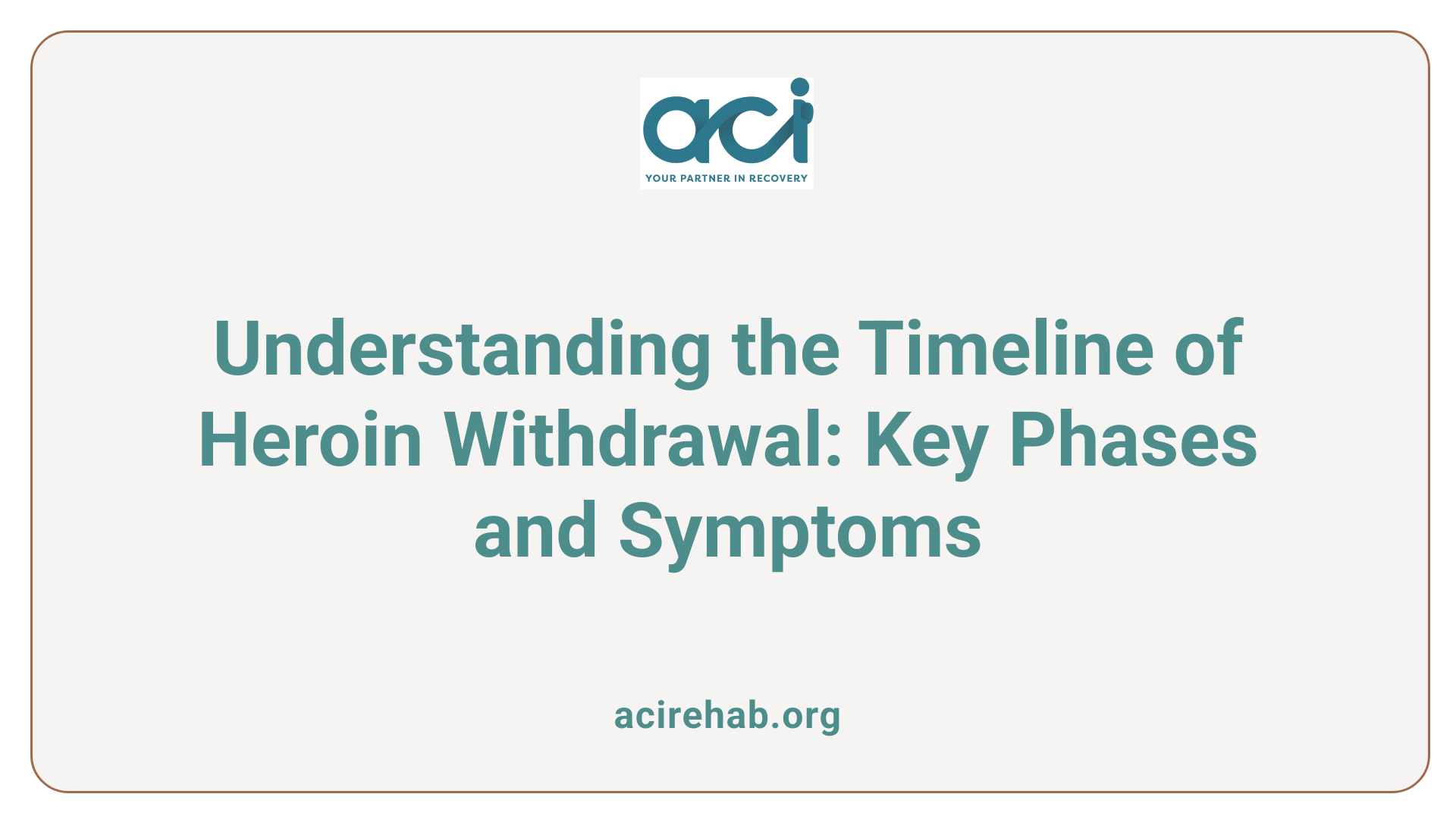
Onset of withdrawal symptoms
Heroin withdrawal symptoms usually begin within 6 to 12 hours after the last dose. Individuals may first experience mild symptoms which can escalate quickly. Initial signs might include agitation, anxiety, muscle aches, increased tearing, insomnia, runny nose, sweating, and yawning.
In many cases, symptoms can begin as early as six hours after stopping heroin use but generally fall within the 6 to 24 hour range.
Duration of acute withdrawal symptoms
Acute withdrawal symptoms have a specific timeline. They typically last about 5 to 7 days, often peaking in intensity between 48 to 72 hours after the last use. This period is marked by severe discomfort, with symptoms like nausea, vomiting, muscle cramps, and insomnia being prevalent.
After the peak, symptoms usually begin to taper off. While most individuals will notice a significant reduction in physical symptoms by the two-week mark, cravings and other psychological effects can linger considerably longer.
Long-term withdrawal effects
After the initial withdrawal phase, some individuals may experience protracted withdrawal syndrome (PAWS), leading to long-term symptoms such as anxiety, depression, sleep disturbances, and persistent cravings. These effects can last for weeks, months, or even years, significantly affecting the recovery journey.
Medically supervised detox can greatly assist this process, as medications like methadone or buprenorphine can help ease withdrawal symptoms and support the individual’s transition to recovery.
| Withdrawal Phase | Time Frame | Symptoms |
|---|---|---|
| Onset of symptoms | 6 to 12 hours | Agitation, anxiety, muscle aches |
| Peak symptoms | 48-72 hours | Nausea, vomiting, insomnia |
| Duration of acute withdrawal | 5 to 7 days | Muscle cramps, chills, diarrhea |
| Prolonged effects (PAWS) | Weeks to months | Anxiety, cravings, depression |
Understanding these timelines can help individuals and their loved ones better anticipate and manage the heroin detox process.
Symptoms of Heroin Withdrawal
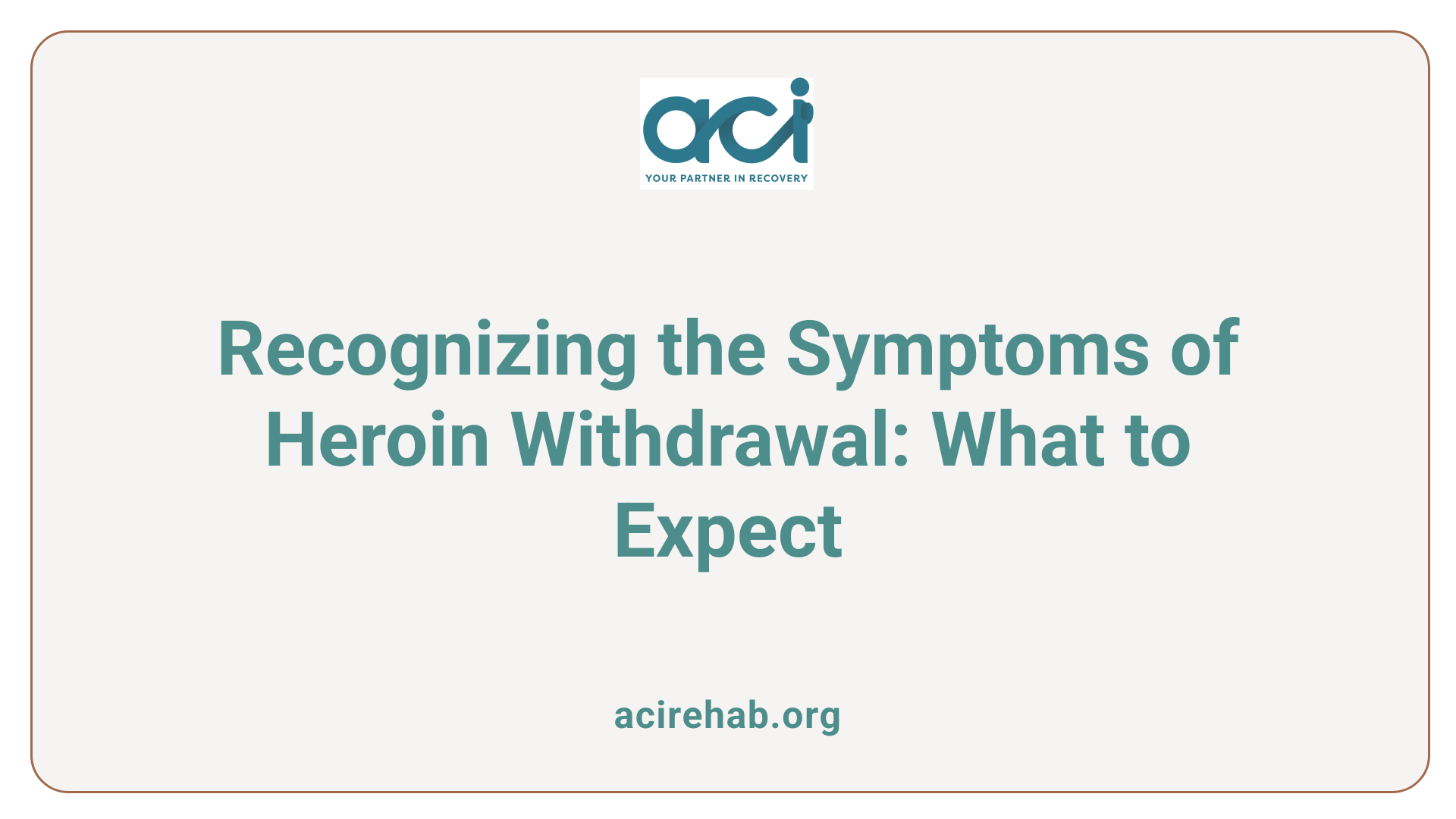
What can someone expect during the heroin withdrawal stage?
During the heroin withdrawal stage, individuals can expect a range of symptoms that can be quite uncomfortable. The withdrawal process typically starts within 6-24 hours after the last dose, with physical symptoms kicking in sooner, often between 6 to 12 hours. Common physical symptoms include:
- Sweating
- Diarrhea
- Muscle aches
- Nausea and vomiting
- Runny nose and watery eyes
These symptoms are often accompanied by psychological effects such as:
- Anxiety
- Agitation
- Insomnia
The symptoms usually peak between 48-72 hours following cessation of use, after which they can last anywhere from 3 to 10 days depending on various factors, including the individual’s history of use, frequency, dosage, and overall health.
While the acute physical symptoms tend to diminish within 5 to 7 days, the emotional and psychological effects can linger significantly longer. These may manifest as:
- Depression
- Insomnia
- Irritability
- Cravings for heroin
In some cases, emotional withdrawal symptoms can persist for weeks or even months. The timeline for these symptoms varies, but many experience a phenomenon known as Post-acute Withdrawal Syndrome (PAWS), where symptoms like anxiety and depression can continue for an extended period following the acute withdrawal phase.
Additional Information
Medical supervision during detox is crucial, as healthcare providers can manage withdrawal symptoms using medications that help stabilize the individual’s condition, making the transition smoother and reducing the risk of complications or relapse.
Factors Influencing Withdrawal Severity
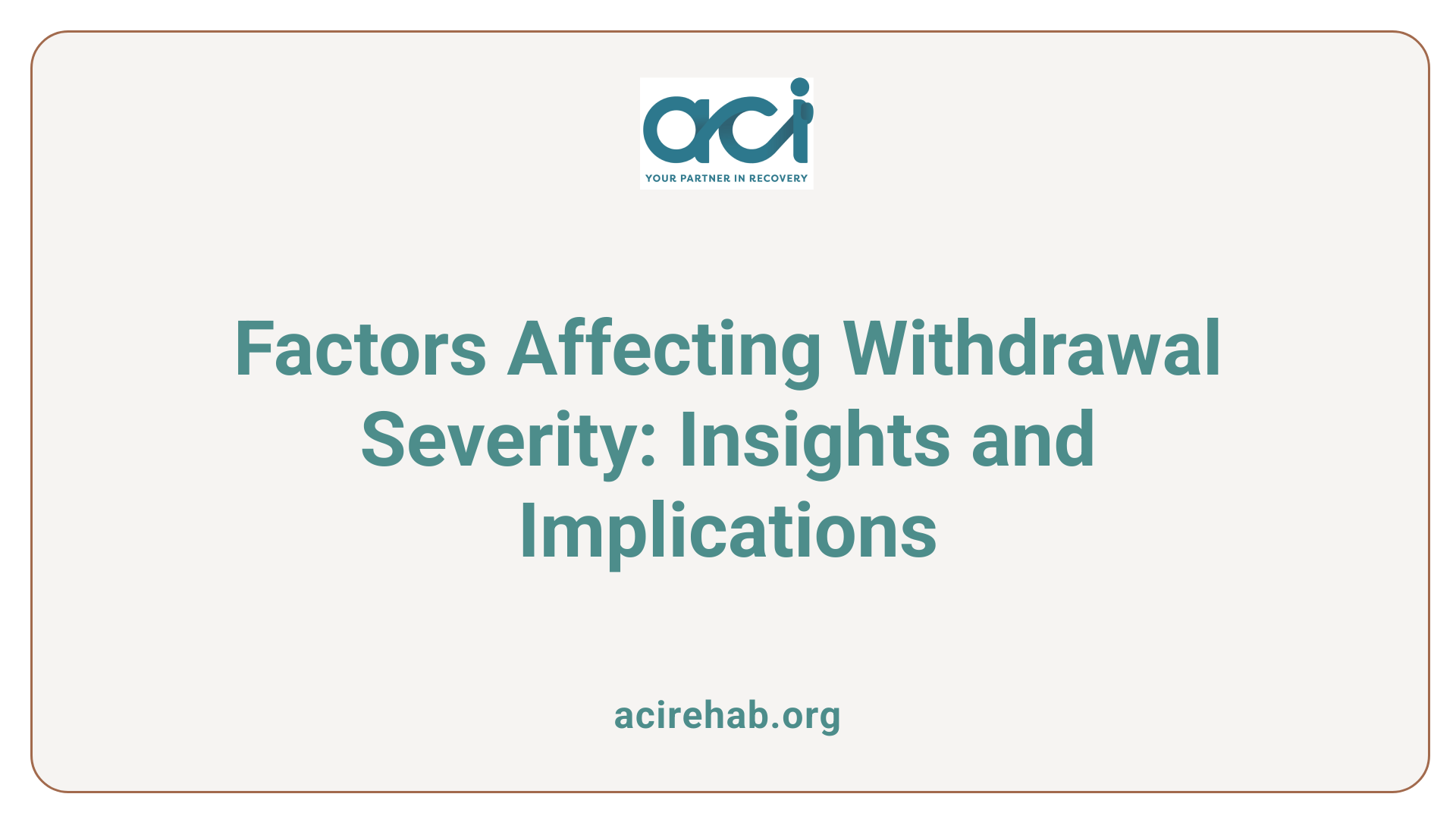
Impact of Frequency and Quantity of Use
The severity of heroin withdrawal symptoms is directly influenced by how frequently a person has used the drug and the amount they typically ingest. Individuals who use heroin more regularly or in higher doses often experience more intense and prolonged withdrawal symptoms. This can lead to physical and emotional challenges that may last beyond the immediate detox period.
Difference Between Short-Acting and Long-Acting Opioids
Heroin is classified as a short-acting opioid, leading to a quicker onset of withdrawal symptoms, typically beginning within 6 to 12 hours after the last use. These symptoms generally peak within 1-3 days and may subside in about a week. In contrast, long-acting opioids, such as methadone, start producing withdrawal symptoms later—between 12 to 48 hours after cessation—and can last much longer, from a few weeks to several months. Understanding these differences can help individuals anticipate their withdrawal experience and seek appropriate treatment strategies.
| Factors | Short-Acting Opioids | Long-Acting Opioids |
|---|---|---|
| Onset of Symptoms | 6-12 hours | 12-48 hours |
| Duration of Symptoms | 4-10 days | 3-6 weeks |
| Withdrawal Peak | 1-3 days | 1-2 weeks |
| Risk of Protracted Symptoms | Moderate | High |
By recognizing how use patterns and opioid types affect withdrawal, individuals can better prepare for recovery.
The Role of Medically Supervised Detox
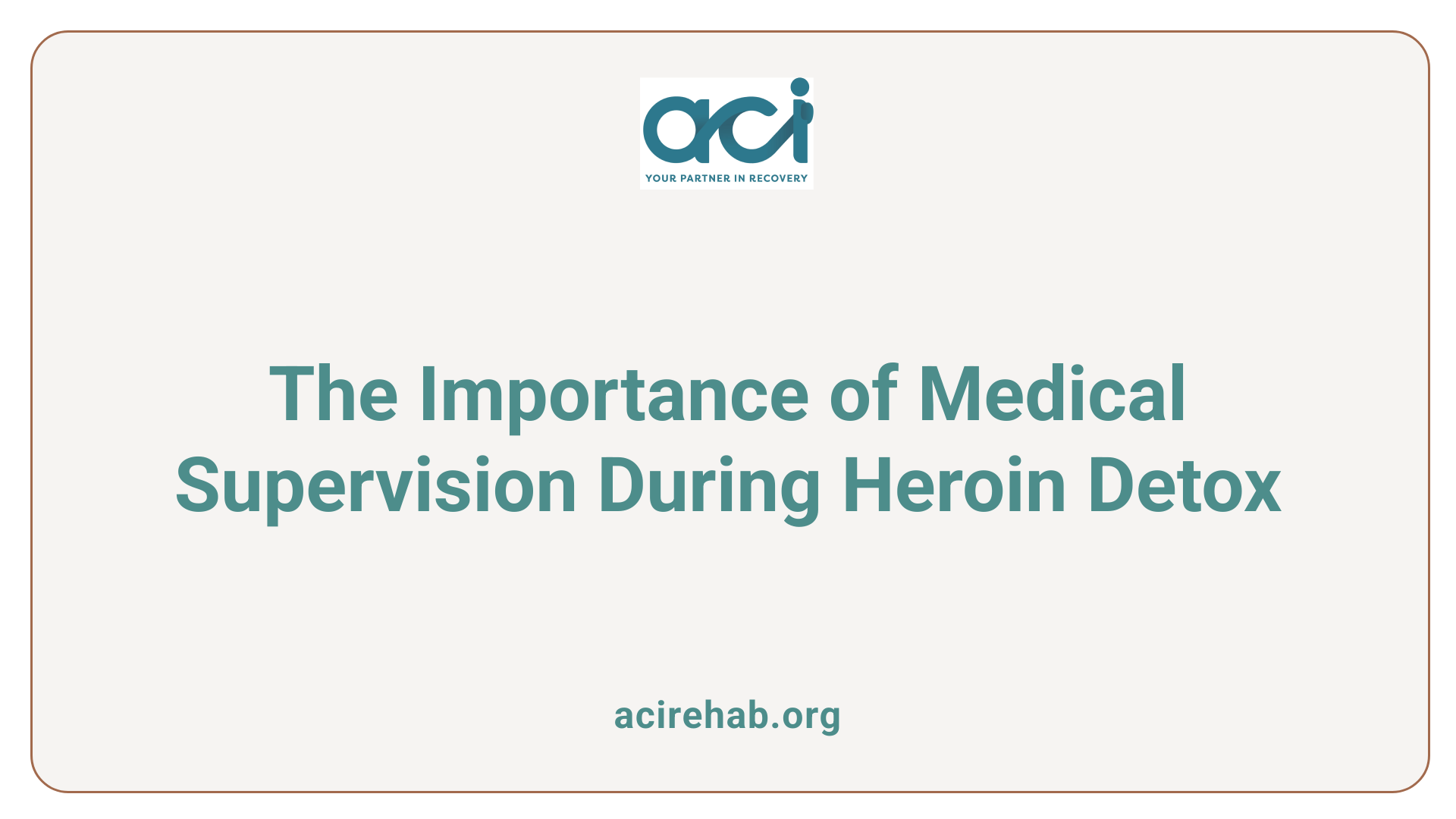
Why is medical supervision recommended during heroin withdrawal?
Medical supervision is crucial during heroin withdrawal for several reasons. Firstly, withdrawal symptoms can be severe, with a range of physical and psychological effects that may escalate if not managed properly. Healthcare professionals are trained to monitor vital signs closely and can intervene promptly if complications arise. This level of oversight ensures that the detoxification process remains safe for individuals.
Secondly, symptoms like nausea, muscle aches, anxiety, and intense cravings can be overwhelming. Medically supervised detox allows for the administration of specific medications, such as methadone or buprenorphine, which can significantly alleviate these withdrawal symptoms without triggering the high associated with heroin. This approach not only improves comfort but also enhances the chances of successfully navigating this difficult phase.
Moreover, emotional support from medical staff is invaluable. As many individuals face significant psychological challenges during withdrawal, having a support system can help them cope with feelings of anxiety or depression, promoting a more holistic recovery.
Safety measures during withdrawal
Some of the essential safety measures taken during medically supervised detox include:
- Monitoring Vital Signs: Regular checks on heart rate, temperature, and blood pressure to ensure stability.
- Medication Management: The use of anti-nausea medications and medications to ease cravings, allowing for a smoother withdrawal experience.
- Hydration and Nutrition: Ensuring patients remain hydrated and receive proper nutrition to combat common withdrawal symptoms.
- Emotional Support: Providing access to mental health resources and counseling to address psychological aspects of withdrawal
These structured interventions help create a safe environment for individuals, reducing the risk of relapse and fostering effective recovery as they transition into comprehensive addiction treatment.
Post-Acute Withdrawal and Long-Term Challenges
Cravings after acute withdrawal
After the initial detox phase, many individuals experience lingering cravings for heroin. Although the acute physical withdrawal symptoms typically diminish within 5 to 7 days, cravings can persist for weeks and possibly months. These cravings are unpredictable and can trigger intense desires to use heroin again, which may increase the risk of relapse.
Emotional symptoms post-detox
Emotional challenges often accompany cravings during post-acute withdrawal. Common psychological symptoms include anxiety, depression, irritability, and mood swings. These emotional symptoms may continue for a prolonged period, sometimes lasting for a year or more. Individuals recovering from heroin addiction may find that maintaining a support network is essential for managing these post-detox challenges effectively.
The Importance of Comprehensive Addiction Treatment
Therapy and Support Groups
Heroin detoxification is a vital first step in overcoming addiction; however, it is crucial to follow up this process with comprehensive treatment. Participation in therapy and support groups plays a significant role in recovery. Individual therapy provides patients with coping strategies and personalized support, while group therapy allows individuals to share experiences, fostering a sense of community and understanding.
Medication-Assisted Treatment
To ease the transition from heroin dependence, medication-assisted treatment (MAT) is often employed. Medications such as methadone or buprenorphine can help stabilize withdrawal symptoms without creating the euphoric highs associated with heroin. This form of treatment complements counseling and therapy, promoting long-term recovery and reducing the risk of relapse.
Incorporating both therapeutic and medication options significantly enhances the chances of maintaining sobriety and addressing the psychological aspects of addiction.
Preventing Relapse After Heroin Withdrawal
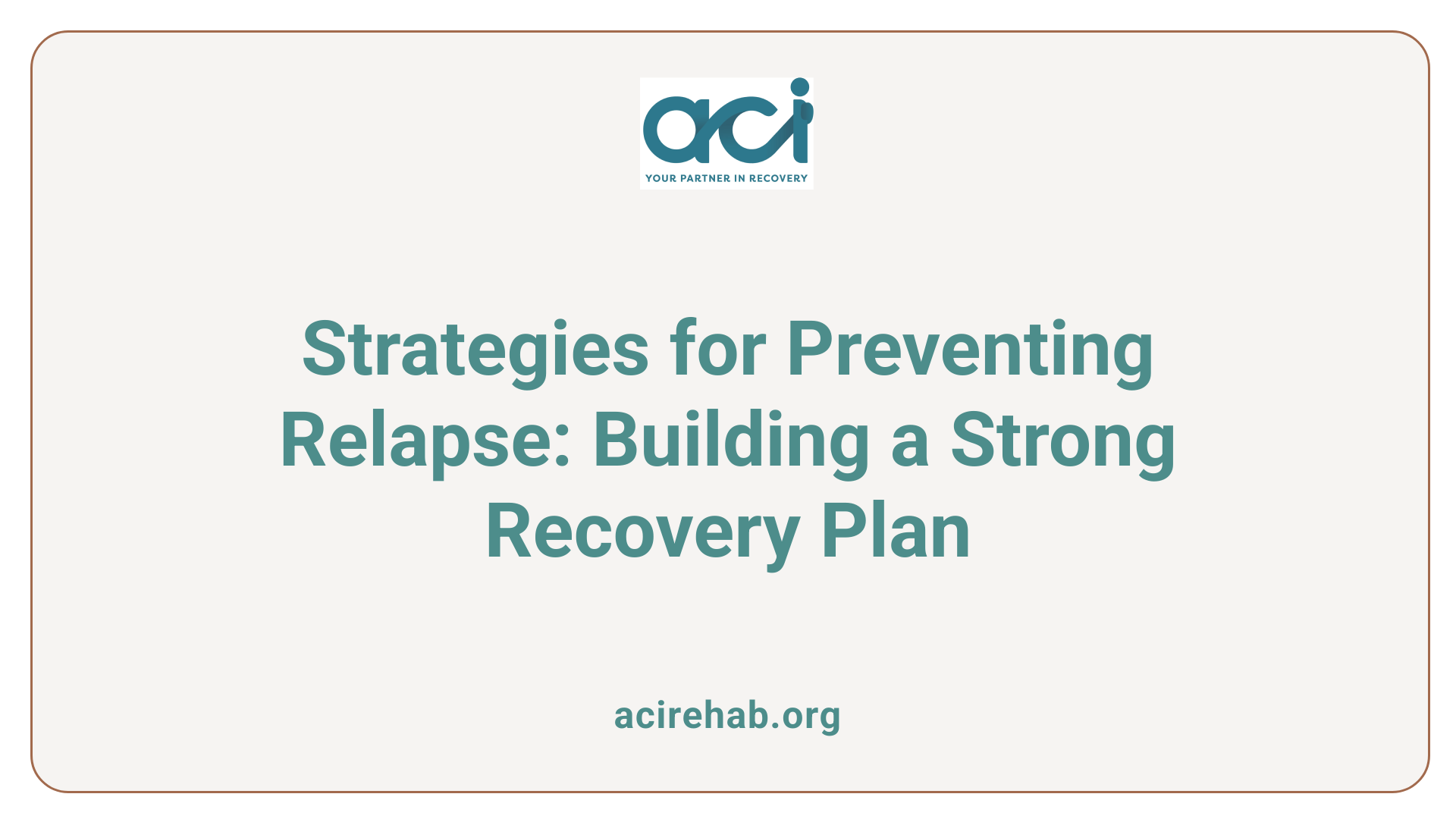
Strategies for Reducing Relapse Risk
- Therapy and Counseling: Engaging in therapies such as Cognitive Behavioral Therapy (CBT) can help in managing triggers and developing coping strategies.
- Support Groups: Participating in support groups like Narcotics Anonymous (NA) provides community support, sharing experiences and accountability.
- Medication-Assisted Treatment: Using medications such as methadone or buprenorphine can reduce cravings and withdrawal symptoms, facilitating a smoother recovery.
Developing a Recovery Plan
- Personal Goals: Set clear, achievable goals focusing on personal recovery milestones.
- Health and Well-being Focus: Integrate a healthy lifestyle, ensuring proper nutrition, exercise, and sleep.
- Stay Engaged: Maintain a schedule that keeps individuals engaged in positive activities and relationships, minimizing idle time for triggers.
Conclusion
Successfully navigating heroin withdrawal is a critical step on the road to recovery. While the process can be challenging, medical supervision and comprehensive addiction treatment programs significantly enhance the chances of long-term sobriety. Understanding what to expect and preparing mentally and physically can help individuals and their loved ones face this challenging phase with strength and resilience. With the right plan and support system, recovery from heroin addiction is attainable.
References
- Heroin Detox & Withdrawal | In-Patient & Home Detox – Rehabs UK
- Heroin withdrawal | DACAS
- Opioid withdrawal management – SA Health
- Withdrawal Management – NCBI
- Heroin Withdrawal Symptoms, Timeline & Detox for Heroin
- How Long Does Heroin Detox Take? – BoardPrep Recovery
- Opioid withdrawal – symptoms, prevention, tapering – Healthdirect
- Heroin Withdrawal: Timeline and Symptoms – Adcare.com
- Heroin Withdrawal & Detox: Timeline, Symptoms & Treatment
- Drug Withdrawal Symptoms, Timelines, and Treatment

